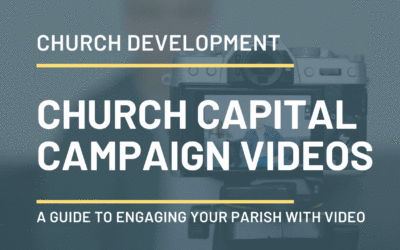A pre-campaign feasibility study offers church leaders a deep understanding of church members and helps facilitate successful capital campaigns. In addition to measuring the likely levels of financial commitments, a properly conducted feasibility study discovers the congregation’s level of support for the church and its ministries, the pastoral and volunteer leadership, and the proposed fundraising effort.
Churches often assume they already understand their members’ willingness to support a capital campaign. In an effort to curtail costs, a church might forego conducting a feasibility study. This decision limits the church’s ability to set a realistic goal, capture valuable opinions and desires of church members, and include members in the planning and executing of a capital campaign.
8 Major Benefits of a Feasibility Study
- Informs and Educates Church Members
- Captures the Input of Key Church Leaders through Personal Contact
- Involves All Members of the Congregation
- Captures Key Issues Important to Church Members
- Analyzes Internal Giving Trends
- Researches the Demographics of the Area Served by the Church
- Identifies Potential Campaign Volunteers
- Evaluates the Potential to Reach a Specific Goal
1. Informs and Educates Church Members
A feasibility study communicates the church’s initial vision and rationale for a capital campaign. Through their participation in the assessment, members’ knowledge and understanding of the church’s vision expands. The interactive approach of a Church Development feasibility study helps members begin the process of building a stronger commitment to the church.
2. Captures the Input of Key Church Leaders
A successful capital campaign depends on good leadership. Your current church leaders will become the principal advocates of your capital campaign. Personal interviews to capture the thoughts and opinions of these important leaders prior to the campaign. In our feasibility studies, we aim to interview between 30-100 church leaders.
3. Involves All Members of the Congregation
A feasibility study illustrates to church members that their input matters. It invites them to help craft the church’s vision and plans. Through a written or online survey, all church members can participate in the feasibility study in a way that is convenient and comfortable for them. This process strengthens the sense of belonging and identity with church, which is healthy for church communities!
4. Captures Key Issues Important to Church Members
How to successfully plan and execute a capital campaign depends largely on the attitudes of the church’s members. A feasibility study captures their opinions, hopes, and frustrations. It is a useful tool for gauging levels of satisfaction and support. This information is used to plan a campaign that addresses the needs of the congregation.
5. Analyzes Internal Giving Trends
No church should embark on a capital campaign without first understanding its own giving history and potential. Our standard practice is research-based; we carefully analyze trends in the church’s contributions, membership, and general growth to understand the full picture of the culture of stewardship in the church, not just looking at how much money is coming in.
6. Researches the Demographics of the Area Served by the Church
To better understand the church’s geographic environment, the likely home of many church members, our final report includes a breakdown of the area’s socio-economic statistics. To be able to reach your neighbors you have to know who they are and where they are coming from.
7. Identifies Potential Campaign Volunteers
An important part of the feasibility study explores the willingness of members to serve on campaign committees. The responses provide a means to identify committee chair persons and members. This information is invaluable as any community-based campaign takes lots of volunteers. The statistics make it clear that your success hinges on the participation of volunteers.
8. Evaluates the Potential to Reach a Specific Goal
The feasibility study gauges the overall support and likely level of financial commitment to a capital campaign. In rare cases, the study may predict that members will not support a campaign without additional church visioning, planning, and communication efforts. Most of the time, a realistic goal is clear and sets the church up for success.
For a full layout of how to conduct a feasibility study, what kind of timeline to expect, and what methods to utilize, check out the feasibility study section of our eBook, Stewardship Based Church Capital Campaigns. Or, if you’re ready to talk about moving forward with a feasibility study give us a shout.


